The Heritage Trail
St Pecaun's Holy Well
Not far from the River Suir between Bansha and Cahir, in the townland of Toureen, is St. Pecaun’s well at the eastern end of the Glen of Aherlow. Over many centuries people have come to this holy place to “do the rounds” to pray and drink of this pure holy water.
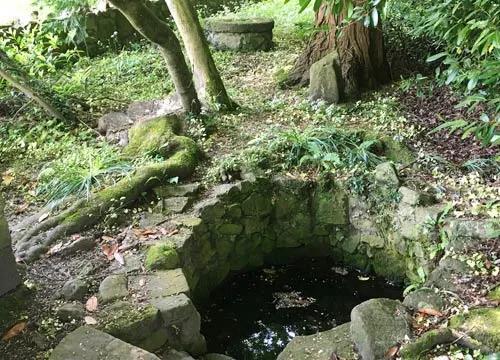
The Ogham Stone, Aherlow
This stone is part of a set of Ogham Stones which can be found in Charleville, County Cork. The Ogham script, an alphabet of 20 letters, is an ancient Celtic script. The letters are between one and five notches, placed horizantally on either side, diagonally across or at an angle of a corner of an upright stone.It is read from bottom to top, it is also believed that the 20 letters are also the names of 20 trees sacred to the druids. The name Ohgam is inspired by Ogma, the ancient God of eloquence.

Moor Abbey, Galbally
The Franciscan friary called Moor Abbey is east of Galbally village and overlooked by the Galtee Mts. Founded in 1471, the friary was suppressed in 1540 but the new owner, the Earl of Desmond left the friars in peace until the friary was burnt in 1569 and 1570. Returning in 1645, the friars were expelled by the Cromwellians, but returned in 1658, and inhabited the friary until 1748. Only the friary church and tower remain today.
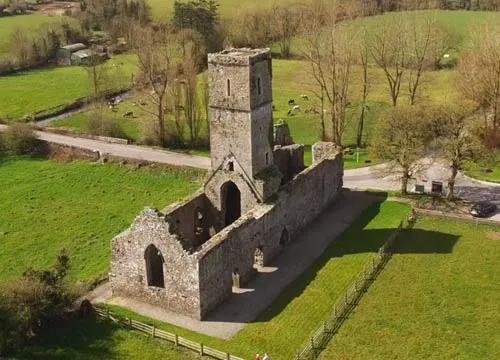
Old Graveyard, Bansha
Darby Ryan, the poet of the Glen of Aherlow, is buried in this graveyard, his grave is marked, curiously, with an anchor. He is famous for his ballad “The Peeler and the Goat” which was widely sung around Ireland during the time of land agitation. The goat represented a spirited protestor and the Peelers are the Police so named after Sir Robert Peel who began the police service in London.

St Sedna's Well, Clonbeg Church
Located in the grounds of Clonbeg Church in the heart of the Glen of Aherlow this site was founded by St Sedna where there are still the remains of an old church wall now completely covered with ivy.
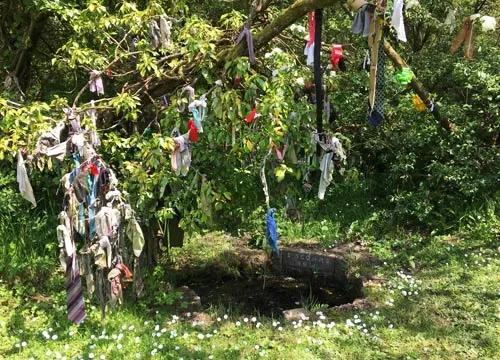
Christ The King
The Christ the King statue was originally erected by voluntary labour during the Holy Year of 1950 and became known far and wide as the symbol of the Glen. It is situated on the quiet country road (R664) from Tipperary town to the Glen of Aherlow. The statue stands on the southern slope of Slievenamuck facing the Galtee Mountains and overlooking the picturesque Valley. The hand raised over the people of the Glen gives a blessing to everyone living there and to everyone who passes through.

The Millenium Stone, Aherlow
The Millennium Stone was erected to celebrate the new millennium, and was a joint project between the parishes of Tipperary Town and Bansha Kilmoyler. The conglomerate stone weighing in at 13.5 tonnes was dug out of a nearby hillside. A mix of stone, sand and ferrous oxide causes it to have a pink hue in the evening sun. Designed by renowned Tipperary sculptor, Jarlath Daly, the stone depicts the annunciation, Birth, Crucifixion and Resurrection from the life of Christ.
From the Statue of Christ the King follow the Millennium Stone Loop walk across the Slievenamuck Ridge (Hill of the Pigs) to take in the views of the scenic Glen of Aherlow valley.
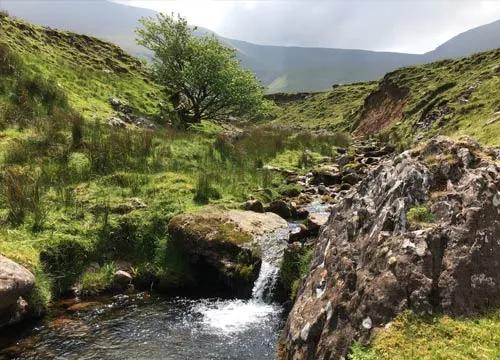
Glen of Aherlow Nature Park
From Christ the King cross the road to the Glen of Aherlow Nature Park. This walk takes about 1 hour to complete, through 50 acres of pure woodland. It is a circular trek and returns to your starting point where you can see the various trees and woodland plants (all identified by panels) and the habitat of many birds and animals. Walk the Old Coach Road where the Bianconi Cars once travelled in the 1800’s or view the ruins of Lenihans Cottage. Sit in relaxation overlooking the beautifully restored old sandstone bridge where the sound of running water, the peace and tranquillity gives you some time out.

Killaldriffe Graveyard
Herein is the burial place of Sir William Butler, born Ballyslateen Golden October 31st 1838 and died at Bansha Castle June 7th 1910. On entering the graveyard read part of his epitaph which was found among his papers after his death. A distinguished soldier serving in India, Burma, South Africa.
While in Canada he is credited with recommending the formation of the North West Mounted Police Force. In 1877 he married Elizabeth Thompson, a famous battle artist. During the Land War in Ireland he was agreat personal friend of Parnell and campaigned for tenants rights and Home Rule. The last five years of his life were spent in Bansha Castle among his own people.

Darby's Bed
Darby’s Bed is located, like most irish megalithic passage tombs on a hilltop. Duntryleague Hill is the westerly extension of Slievenamuck Hill. Dating back almost 4000 years it is believed to be the grave of Oilill Olum, who was one of the early kings of Munster.
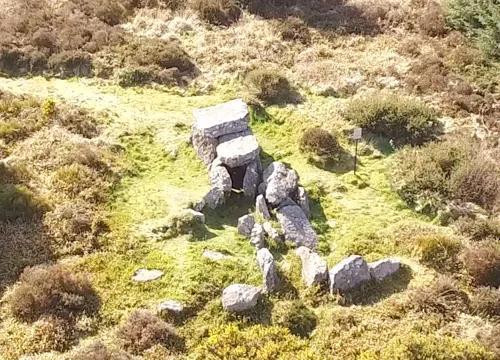
Remembrance Arch, Tipperary Town
n early 2004 Tipperary Remembrance Trust was formed. The Trust brought together Irish Ex-servicemen and Women, and people from grouping dedicated to Remembrance, Peace and Reconciliation. Adjacent to St. Vincent’s Day Care Centre on the site of the former Tipperary Military Barracks stands the only remaining portico of the Officers Mess and Living Quarters.The Trust renovated the Portico, on the completion we called it “Tipperary Remembrance Arch” and our President, Mary McAleese dedicated it on the 30th September 2005 to their memory.The Arch is also dedicated to the memory of those who came home from those conflicts seriously injured, maimed and sick from what they went through, did not survive for long after and especially those whom to this day are still missing.
The names of those who died since the end of WW2 are displayed on tablets on the rear of the arch. The Arch is to small to show the names of those who died in the war’s and our war for independence. We are presently working on a database that will hold all the names and information on where they were killed and where they are interred, etc.
The Trust holds an annual remembrance Ceremonies at the Arch on the last Sunday of September and at any other opportunities by request.

Excel Centre, Tipperary Town
The Tipperary Excel Heritage Centre is an Arts and Culture Centre in Tipperary town providing a centre of excellence in the delivery of Arts, Culture and Heritage to County Tipperary. Its facilities include the Simon Ryan Theatre, Art Gallery, Dance studio, Digital Cinema, Heritage Centre and Tourist InformationIt is also home to the gastro award winning French Quarter Cafe
Tel: 062 80520

St Berrihert's Well and Kyle
Located at Ardane at the eastern end of the Glen of Aherlow is St Berrihert’s Well & Kyle. The principal feature of this site is the oval enclosure, the Kyle, as it is called locally which was created to preserve the unique collection of stones found on the site.
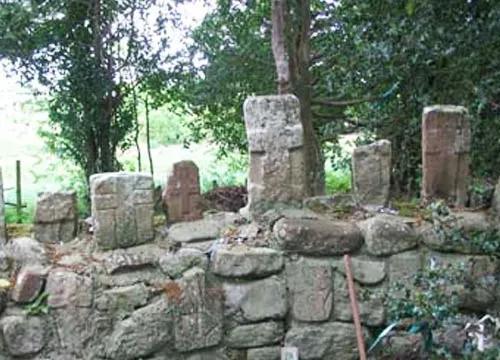
Athassel Abbey, Golden
The remains of Athassel Abbey can be found in Golden, a village about 7km from Cashel, County Tipperary. The abbey was built for the Augustinians by William Fitz-Aldhelm de Burgho in the 12th century. It was one of Ireland’s most extensive monasteries, stretching out over beautiful 4 acres of land along the banks of the River Suir Athassel Abbey, an Augustinian monastery established in the 12th century and dedicated to St Edmund.
It is the largest medieval priory found in Ireland. It burnt down in 1447 and the monastery was dissolved in the 1500s.The buildings were subsequently neglected and fell into ruin.
The nave of the Abbey is today used as a cemetery, and among the many bodies laid to rest in the chapel is that of William de Burgho, the man who established Athassel over 800 years ago.

Lake Muskry
A walk to Lake Muskry from Rossadrehid village is must to experience the mountain ecosystem and natural environment of this spectacular Valley.
The geology of the area is dominated by Old Red Sandstone from the Devonian period 300 million ago. There are 5 lakes in the Galtees which are important aquifers and were created by the action of ice and is some of the finest examples of a glacial lake site with erosional and depositional features. The higher peaks, known as nanataks, protruded above the ice and were subjected to intense freeze-thaw action, a good exampleis O Loughlan’s Castle which overlooks Lake Muskry.
Lake Muskry was formerly known as Lough Béal Sead (Lake of the Jewel Mouth). Legend tells that the lake was once home of beautiful maidens who every second year were metamorphosised into birds, one becoming the most beautiful in the world. To mark her pre-eminence she was allowed to wear a golden necklace which had a sparkling jewel in it.

War of Independence Museum, Tipperary Swimming Pool
War of Independence memorabilia and photos can be seen in the foyer of the Sean Treacy Swimming pool
The Soloheadbeg Ambush in County Tipperary was one of the most important episodes of The War of Independence. It was here that the first shots of that conflict were fired on the 21st. January 1919. Coincidentally, this was the same date as the first meeting of Dail Eireann in Dublin. Soloheadbeg is a townland, some two miles outside Tipperary Town. Gelignite was being carried to the local quarry by two council workers, Godfrey and Flynn, guarded by two armed RIC Constables, McDonnell and O’Connell.
Volunteers led by Treacy and Breen lay in wait for the convoy; hiding in a small, disused quarry along their route. When the convoy drew close, the Volunteers emerged and challenged them, shooting dead both Constables who had attempted to ready their rifles. The rebels then rapidly withdrew, taking the gelignite. Treacy, Breen and Hogan went on the run. As a result of this action, South Tipperary was placed under martial law and declared a Special Military Area under The Defence of the Realm Act.

